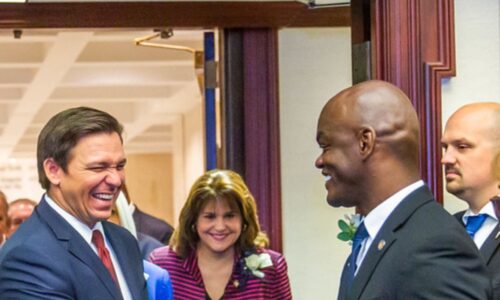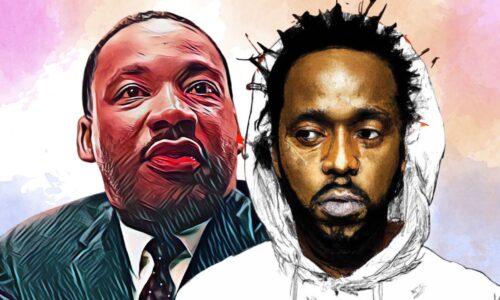 By: Gene Moyle, Queensland University of Technology By: Gene Moyle, Queensland University of Technology |
Flexing, or Flex, is a street dance style that originated in Jamaica in the 1990s and grew up on the streets of Brooklyn, East New York.
Performed to dancehall and reggae music, it has since evolved into a protest movement – an avenue for “flexors” to rally against social injustice, police brutality and racism.
Considered by many a form of political expression – part-protest, part-advocacy – flexing gained momentum in the era of unrest following the police killings of two black men in the US: Michael Brown in Ferguson, Missouri and Eric Garner in New York City.
Flex confronts issues of social injustice through the exploration of personal narratives; dancers perform as individuals and groups, articulating their stories of inequality, poverty, violence, death and hopelessness in confronting vignettes. They use dance to tell deeply human stories that often transmute into joyful artistic expression.

Flexn.
Stephanie Berger, Courtesy of Park Avenue Armory., Author provided
Mistakenly grouped in with hip hop, flexing originates from “Bruk Up” which has been described as a reggae style of popping. Usually danced shirtless and characterised by rhythmic contortionist movements of the arms and body, the dancers create new movement vocabularies on a seemingly daily basis. Laden with intent, flex is a style that enables its performers to “talk” about topics in a language just as potent as spoken word.
More than just a popular trend, flexing is gathering ongoing interest in mainstream culture. The dance documentary Flex Is Kings premiered back in 2013 at the Tribeca Film Festival and music artist Chris Brown frequently incorporates flex and battles into his live shows. The highest compliment you can pay a flexor is to call them “dirty” – Flexapedia definition meaning “Not to be messed with; extremely skilled”!
Audiences had the chance to experience the energy and electricity of the dance form during FLEXN, which opened at Brisbane Festival last week. Bone-breaking, connecting, get-low, gliding, hat tricks, snapping and pauzin – these are some of the signature moves of “Flexing” that were on show during the performance.
The show’s comprehensive program introduces the uninitiated not only to a Flexapedia of terminology, but to the detailed life stories of each of the dancers.
These narratives form the basis of the 18 episodes or sketches in the show. The audience is guided through gang warfare, domestic violence, incarceration, police barbarity, and the futility of hope when dreams of a better life are lost.
FLEXN is a collaboration between flex pioneer Reggie “Regg Roc” Gray, theatre director Peter Sellars, and members of the US African-American Flex community.

Flexn.
Stephanie Berger, Courtesy of Park Avenue Armory., Author provided
Wanting to extend beyond the moves and tricks that are part of flexing’s battle culture, the creative team took a storytelling approach. Each of the 15 dancers (12 men, 3 women) contribute something of their own history to the collective memory-making.
Initial rehearsals coincided with two key events that FLEXN looked to address in literally a protest “movement”, the deaths of Eric Garner and Michael Brown – both at the hands of police.
With music that ranged from traditional hip-hop through to Justin Timberlake, dancers interspersed dance moves with a literal miming of the lyrics – an approach that sometimes detracted rather than added to the emotional translation.
The sketches with the most impact, however, saw dancers demonstrating exquisite power, strength, sharpness, control, and a compelling emotional depth and expressiveness.

Flexn.
Stephanie Berger, Courtesy of Park Avenue Armory.
Central to the performance were demonstrations of the arm-contorting movement called “bonebreaking”; one could interpret this movement as a very literal translation of the saying “having your arms tied behind your back”.
In particular, James Davis, Sam Estavien and Dwight Waugh moved in very individual and distinct ways, yet slipped into beautifully lyrical and flowing movement sequences that belied the fact that many have no formal “dance” training.
A key distinction about flex is that it focuses upon freestyling – improvising and creating your own moves. The sketch that best showed off these capabilities was Solitary Dances. Each dancer, framed by an invisible prison cell represented by squares of light, performed one-by-one with alternating music that represented their own story and flex style.
Some pieces were longer than others and could have done with some editing, however the overall effect was powerful. Considering that the whole show is made up of freestyling, bar a few small group choreographed sections, it is easier to forgive the flat spots where staging or mimed storylines detracted from the sheer athleticism and artistry of the dancers.
In the US, flex is a dance style closely associated with the street, and transplanting the show to the more staid environs of a proscenium-arched stage detracted from its characteristic immediacy and spontaneity. Regardless, the talent of the dancers themselves still shone through.
Gene Moyle, Associate Professor in Creative Industries, Queensland University of Technology
This article was originally published on The Conversation. Read the original article.




